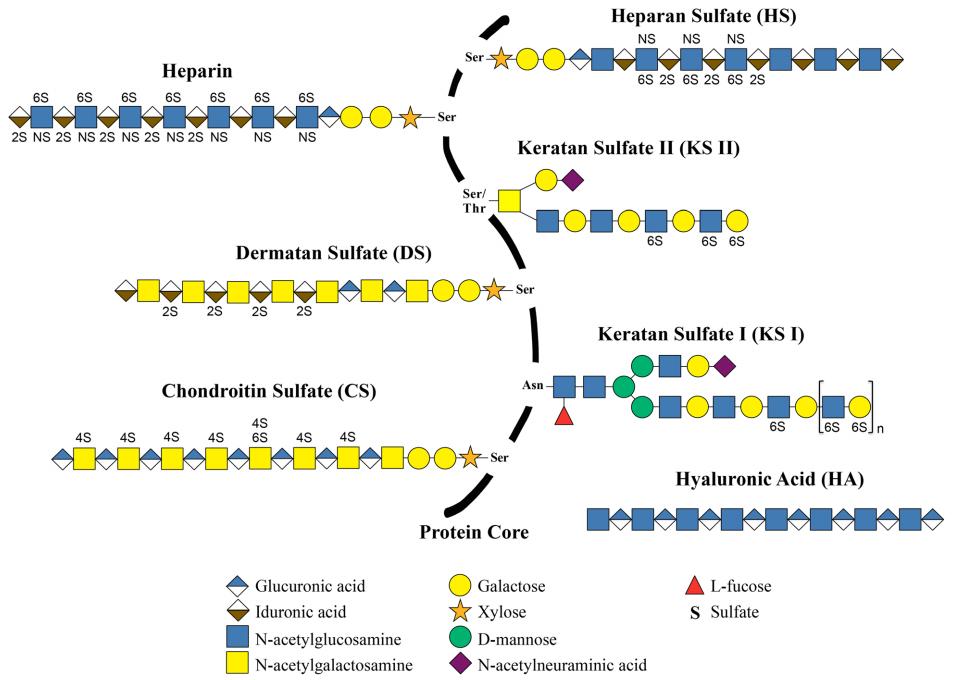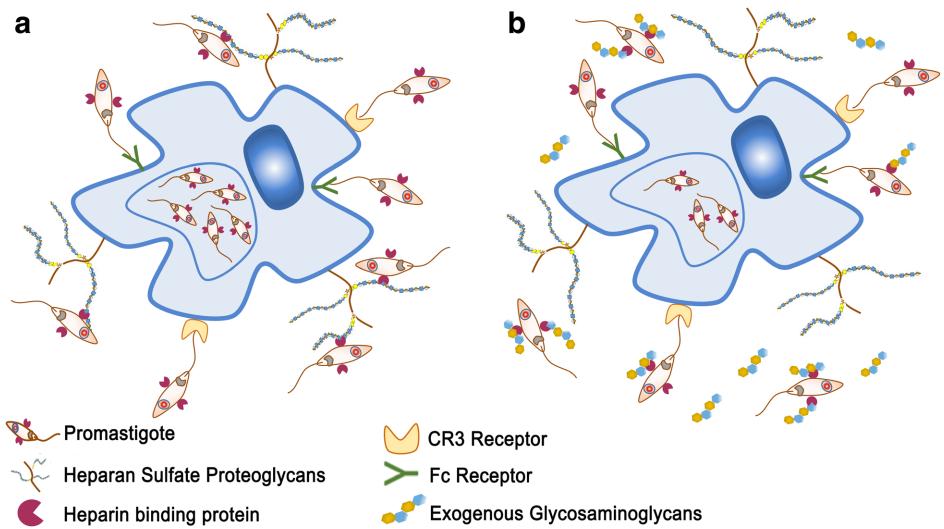Glycosaminoglycan
With integrated antibody development and engineering techniques, Creative Biolabs offers a comprehensive set of anti-glycan antibody services for our honor clients. We provide either individual service modules or a full antibody development service. At present, we tailor services to develop high-quality anti-glycosaminoglycans (GAGs) antibodies for multiple applications.
Glycosaminoglycans
GAGs are a complex family of linear polysaccharides, consisting of repeating disaccharide units of hexosamine attached through O-glycosidic linkage to a hexuronic acid or to galactose. The structure of different GAGs is shown in Fig. 1. Sulfate groups, together with the carboxylic acids of uronic acids, attribute to these molecules a high density of negative charges. Recently, studies of polysaccharides, especially those related to their biological activities, have been attracting increasing interest. The applicability of this group of molecules in diagnostics and therapeutics is due to structural characteristics, such as species-specific, heterogeneity, monosaccharide composition and so forth.
 Fig.1 Schematic representation of glycosaminoglycan chains.1, 2
Fig.1 Schematic representation of glycosaminoglycan chains.1, 2
Biological Activities of Glycosaminoglycans
Studies have shown that GAGs are involved in many biological functions, for instance, cell-cell and cell-to-matrix interactions, cell adhesion, immobilization of cytokines and chemokines, and in the immune response of different types of organisms. GAGs are abundant in the extracellular matrix (EM) and many of them are able to interact with the host cell and parasite, mediating positive and negative effects for the infection, depending on their structure and/or location. GAGs are present at the surface of macrophages as proteoglycans, playing important roles for parasite recognition and uptake.
Glycosaminoglycan-based Therapeutic Strategies
- Heparin-binding proteins (HBPs) canonical proteins involved in the invasion of host cells by protozoan parasites. One possible approach is the heparin analogs or heparin-like exogenous molecules. These molecules could be used as antagonists of HBP, decreasing macrophage invasion and disease progression.
 Fig.2 Glycosaminoglycans as a therapeutic strategy.1, 2
Fig.2 Glycosaminoglycans as a therapeutic strategy.1, 2
Glycosaminoglycans Might Be Served as Useful Biomarkers
- GAGs are excreted into an amniotic fluid by the fetal kidneys and could be used as a marker in the prenatal diagnosis of mucopolysaccharidoses (MPS). GAG is a useful, fast and cost-effective diagnostic tool in the prenatal diagnosis of MPS. Scientists begin to provide an understanding of pathophysiological roles on GAGs and GAGs might be useful in identifying potential biomarkers in cancers. Additionally, alterations of GAG structures and capacities to interact with and regulate the activity of HBPs might contribute to impaired tissue homeostasis in the Alzheimer's disease brain.
Creative Biolabs is one of the forward-looking antibody research institutions and providers who lead the development of the era, offering the best service to the customers around the world. Our seasoned experts in antibody research and development are pleased to provide anti-GAG antibody development services for you. Please do not hesitate to contact us for more details.
References:
- Merida-de-Barros, Débora Almeida, et al. "Leishmaniasis and glycosaminoglycans: a future therapeutic strategy?" Parasites & vectors 11 (2018): 1-12.
- Distributed under Open Access license CC BY 4.0, without modification.
